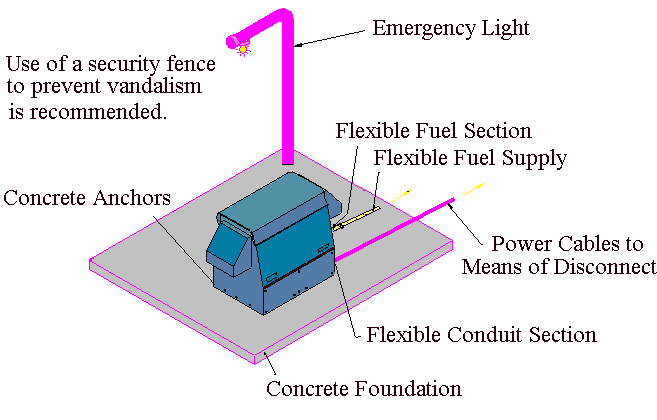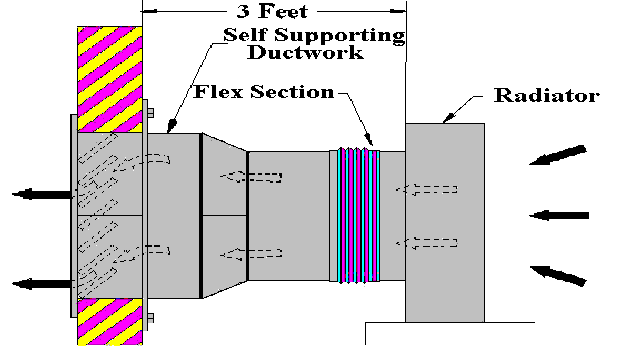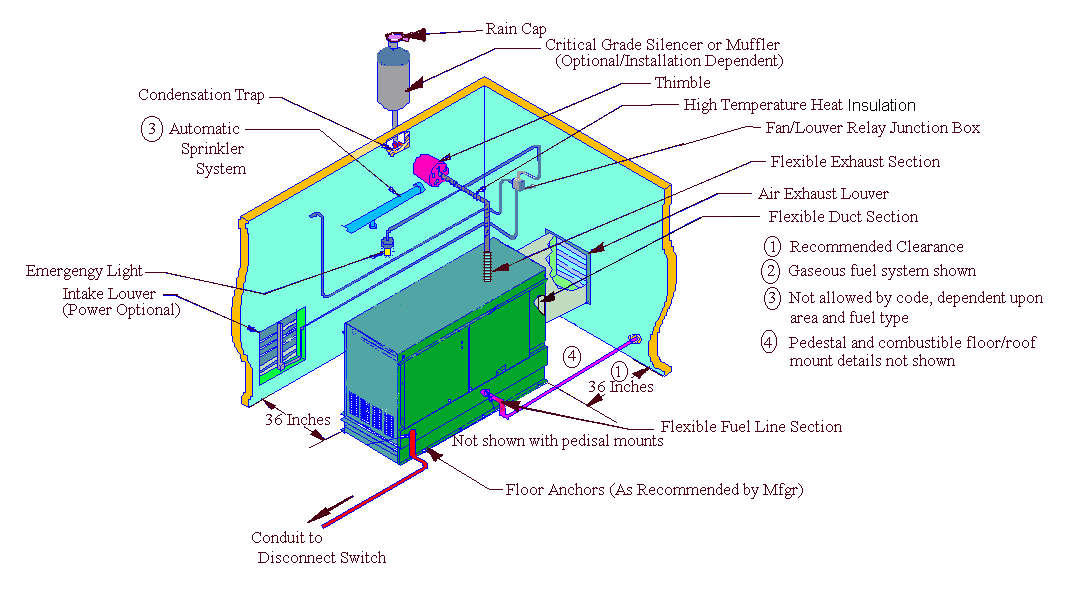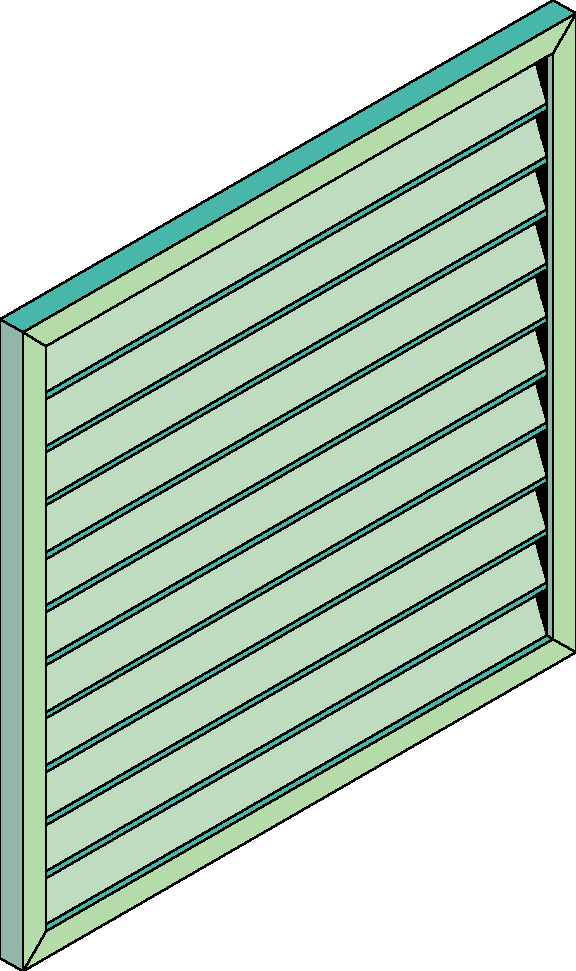Figure 4 . Typical Outside Small Generator Installation

SECTION 4 -
Ventilation
4-1. Outdoor
Installations - Air Cooled Units
The following general rules apply:
Figure 4 . Typical Outside Small Generator Installation

4.2
Indoor
Installations - Air Cooled Units
When a generator is installed and operated in an indoor environment, adequate
ventilation for heat dissipation and combustion is required. Ventilation
is typically done through the use of an air inlet, air outlet/exhaust fan,
and/or other ventilation openings.
The following rules apply:
4-3.
Ventilation Exhaust Fans and
Air Inlet Louvers
Some indoor installations may require the use of one or more exhaust fans,
to provide adequate ventilation during generator operation.
The following rules apply:
4-4. Ducting of Air
The engine cooling fan moves a large volume of air during operation. This
heated air must be expelled to the outside of any structure housing a
generator.
The following rules apply to the ducting of heated engine air out of a
building:
Figure 5.
Typical Indoor Ventilation
Duct



Figure 7.
Typical
Indoor Larger Generator
Installation
Roof mount radiators on liquid cooled units is sometimes done where the installation location of the unit can not dissipate the heat generated by the unit during operation. Roof mount radiators is beyond the scope of this publication.
4-5. Louvers,
Screening And Expanded Metal
When louvers, screening or expanded metal are used to cover air openings
in buildings housing generators, consideration must be given that these materials
do not restrict the free flow of cooling air. Any restriction must be compensated
for by making the actual opening size proportionately larger.
Louvers: Either fixed or movable louvers may be installed on the air openings
in a structure that houses a generator. The installer must make sure that
the total square inches of free air inlet opening is sufficient to limit
the heat rise in the room to prevent the room temperature from exceeding
the generator 's operating temperature.
Figure 8. Louver

Find the actual free air opening as follows:
Figure 9. Screening and Expanded Metal
![[Image]](screen.gif)
Screening and Expanded Metal: Screening and expanded metal may be used to
cover air inlet and outlet openings in a structure that houses the generator.
These materials also offer a restriction to the free flow of cooling air,
which must be compensated for by making the actual air opening in the structure
proportionally larger. Screening and expanded metal are usually assigned
a "free air inlet area" value by the manufacturer, which is given as a
percentage.
To find the actual size of the air inlet opening needed, proceed as
follows:
Example 1: If the required inlet air opening area on a particular generator
is 400 square inches and the building air opening is to be covered with screening
having a 70% "free air inlet area":
Divide 400 square inches by 0.70, to obtain 576 square inches. Actual air
inlet opening size in the building should be equal to or greater than 576
square inches. (An opening that measures 24 X 24 inches (576 square inches)
would be adequate in this case to achieve the required 1125 Cu. ft/minute
(31.86 Cubic Meters/Min.).
Example 2: The required inlet air opening area on a particular generator is 500 square inches and the building air opening is to be covered with screening having a 70% "free air inlet area":
Divide 500 square inches by 0.70, to obtain 714 square inches. Actual air
inlet opening size in the building should be greater than 714 square inches.
(An opening that measures 27 X 27 inches (729 square inches) would be adequate
in this case to achieve the required 2000 Cu. ft/Minute (39 Cubic
Meters/Min.).
Tips on Hooking up a Generator (genset) to a Uninterruptible Power System (UPS)
 |
|
Amazon.com now has tools, tooling and gas powered generators in their Amazon.com's Home Improvement Store. Click on Amazon.com's Home Improvement Store or the logo below to go there or use the Search feature.
Copyright © Dexter A. Hansen